I’d like to introduce to you some localized varieties of soba found in different parts of Japan.
Some of them are standard, but there are some unique alternatives. Let’s explore the wonderful world of soba.
Fascinating Noodle Combinations
1. Cha-soba in Kyoto
This type of soba commonly seen in Kyoto is made by adding green tea powder into buckwheat flour. Cha-soba is not only found in noodle restaurants, but you can also find it in cafes or confectionary shops.
2. Tsugaru-soba in Aomori Prefecture
In the Tsugaru area, soba is a staple food. However, they add soy milk into buckwheat flour in order to provide some protein. The noodle has the flavor of sweetness from soybeans and savoriness from the buckwheat. It’s often served warm, similar to a hot pot.
3. Kushiro-soba in Hokkaido
There are a lot of soba restaurants in Hokkaido because it’s a buckwheat growing district. People living there eat Kushiro-soba as their soul food which is chlorella kneaded into buckwheat. It has a beautiful green hue and goes down quite smoothly.
4. Hegi-soba in Niigata Prefecture
This is from Niigata facing the sea of Japan. It’s made from buckwheat and seaweed which is cooked al dente and is quite good. One of the best features is that it’s served in a container called ‘Hegi’ which is a bamboo box similar to a tray.
5. The others
There are more unique noodles regardless of the area in Japan. I’ll give you a quick overview without the details. They are Jinenjyo, Konnyaku, Ume, Cherry Leaves, Mulukhiya, Walnuts, and so on.

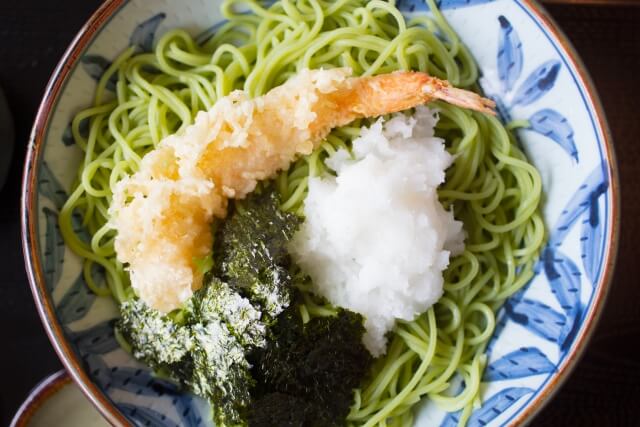
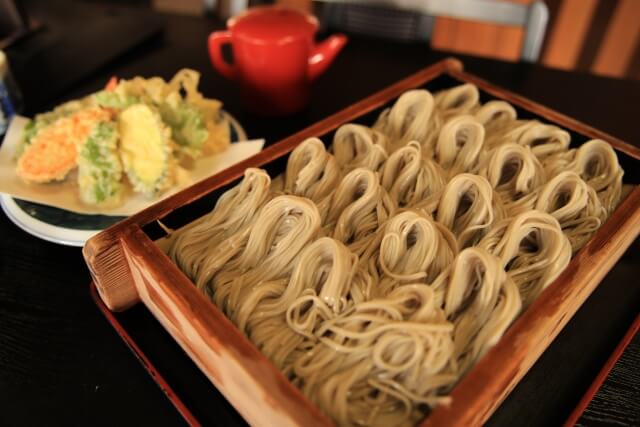

Special Ways of Eating
1. Wanko-soba in Iwate Prefecture
It’s a famous part of Iwate food culture that is served continuously until the customer wants to stop. You should cover the bowl with a lid when you feel full. If you don’t, the server will never stop refilling. The rapid-fire give and take between you and the server is enjoyable and adds to the pleasure of eating Wanko-soba. Generally, men eat an average of sixty bowls and women eat forty bowls. How many bowls of soba can you eat? Do you want to give it a try?

2. Kawara-soba in Yamaguchi Prefecture
This is originally from Hagi in Yamaguchi and is fried Cha-soba with ingredients like meat and vegetables on a heated plate-shaped roof tile.There is a unique history behind using roof tiles. At the end of the Edo era, soldiers used roof tiles on the battlefield instead of dishes.
The baked soba noodles and vegetables are crispy and savory.

3. Takato-soba in Fukushima and Nagano Prefecture
Ouchi-Jyuku in Fukushima once flourished as a post station on the Shimono Road and it’s a hidden sightseeing gem. It has a nostalgic atmosphere and is worth visiting. The feudal lord from Takato, present-day Nagano Prefecture, brought soba culture to Aizu, present-day Fukushima Prefecture, and soba artisans established Takato-soba as a part of their culture. Therefore, Takato-soba is eaten in those two areas.
When you eat soba with thick white green onions instead of chopsticks, it might be challenging but no worries, you have chopsticks if you need. The basic condiment is grated Japanese radish. You can taste its spiciness.

4. Soba-shabu in Osaka Prefecture
As it literally means soba shabu shabu like a hot pot, you should dip the soba with a strainer and put meat into the Dashi soup quickly. Regarding other ingredients, it would be good to boil them well. This style of cooking seems unlikely but believe it or not, it tastes great. Just give it a try.
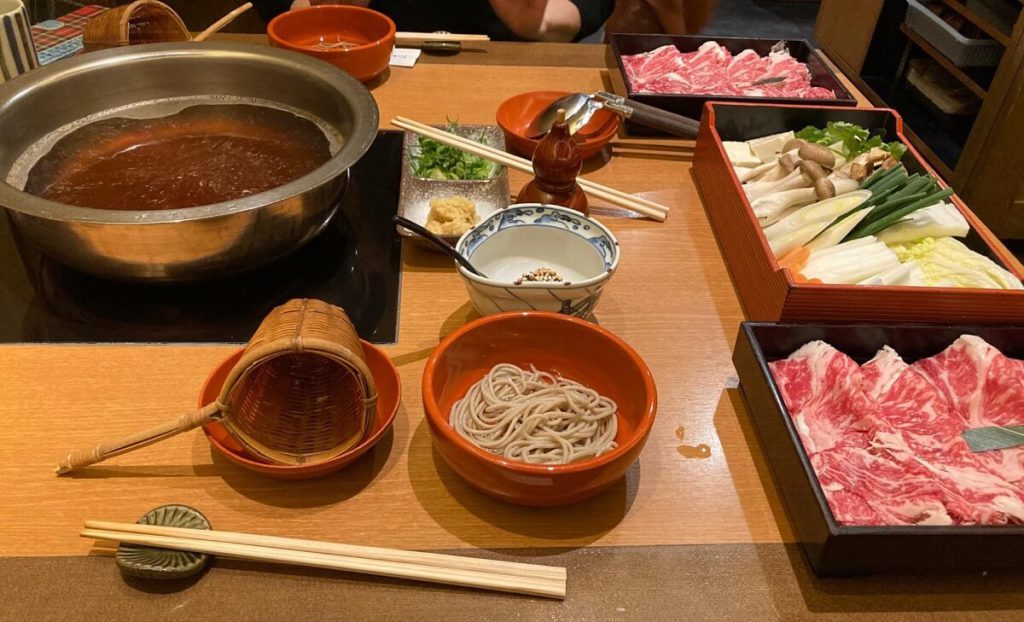
5. Izumo-soba in Shimane Prefecture
Needless to say, the Izumo area is well-known for its world heritage site. A lot of people visit Izumo Taisha Grand Shrine, and after worship they enjoy soba around the shrine. There are two types of soba. One is cold Warigo, and the other is hot Kamaage. Warigo is served in three-tier lacquer bowls, and you can add tsuyu sauce and a variety of ingredients. The noodles have an earthy taste and are chewy. Why don’t you eat traditional soba at the sacred place called ‘God Ground’?

Various Toppings
There is a wide variety of soba styles ranging from standard to delicacy. Here are a few of the most popular soba dishes for you. Speaking of soba toppings, they would be deep-fried bean curd, tempura, nameko-mushrooms, grated yam, grated Japanese radish, duck meat with white leek, natto, flavored herring, and so on.
Some special toppings are Kinira and citrus. I wonder if even Japanese people know them? Kinira is a yellow Chinese chive which is raised without sunshine like sprouts. It tastes like green onions and is crispy. People living in Okayama Prefecture prefer this vegetable. It’s used for home made dishes.

A round slice of citrus like sudachi, yuzu, and kabosu goes with Dashi soup, and it refreshes the inside of the mouth. I recommend it when you lose an appetite or get a hangover.

Trivia
- Generally, slurping noises are not considered bad manners in Japan. Taking in the air into the mouth helps the soba flavor stand out.
- You should add condiments like wasabi or red pepper little by little.
- Make sure to go ahead and eat soba quickly or the noodles get soggy.
- Soba-yu is a must have. It’s hot soba water used for boiling and contains plenty of nutrients. After eating soba, pour it into the cup with soup or dipping sauce. This is free of charge.
- You can find stand-up soba shops in town or inside of the train station. It is a traditional fast food in Japan. It’s not only for saving time, but you also get to eat your fill. Feel free to drop by a soba stand.
Let me say a few words in conclusion. Thank you for reading, and I’m delighted to show you my article.
I hope you enjoy traveling and eating soba in every place in Japan.
Brand Ambassador of kyoto Denim company, Kimono dresser, Japanese flower arrangement instructor I was born and raised in Osaka, I know this area like my backyard. I’d like to introduce Japanese culture and good points to someone from overseas. That’why I study English every day. Please feel free to ask me if you need anything.


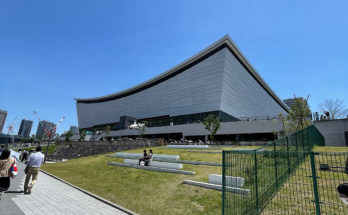
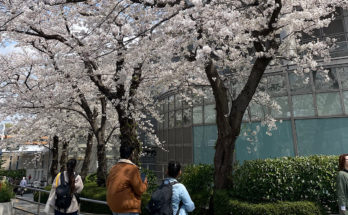
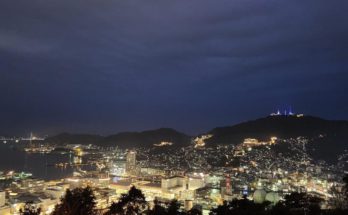
 HTJ has a YouTube page! Check it out
HTJ has a YouTube page! Check it out